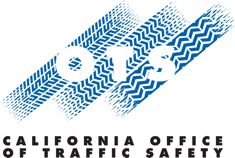About 13 percent of California drivers are busy using cell phones while behind the wheel — up from almost 10 percent in 2015 — a state study suggests.
Almost 8 percent of the state motorists were deemed to be driving distracted due to electronic device use, up from 5.4 percent.
 The state Office of Traffic Safety called the results of its sixth annual observational study “discouraging, but not totally unexpected.”
The state Office of Traffic Safety called the results of its sixth annual observational study “discouraging, but not totally unexpected.”
“Typing” and “posting” by drivers were up almost a third in the 2016 study, although “nearly all types of usage were up.”
The report — “Observational Survey of Cell Phone and Texting Use among California Drivers” — said urban areas were the most likely to see distracted driving, with Southern California motorists holding the phone to their ear at a rate double that of other parts of the state.
Not all of the electronic device use was illegal, as the figures included drivers using hands-free devices. Most safety experts consider wireless communications device use a hazard, regardless of whether handheld features are employed. Some experts, including the National Safety Council, have called for bans on any use of cell phones while behind the wheel, based on studies that suggest the phone call itself provides the distraction.
The OTS study said “holding phone to ear” behavior “increased significantly,” by almost 1 percent in 2016.
“These latest numbers are discouraging, but not totally unexpected,” OTS Director Rhonda Craft said. “The number of smartphones in the United States has gone from zero, 10 years ago, to over 200 million today. They have become so much a part of our lives that we can’t put them down, even when we know the danger.”
Researchers found “a significantly higher rate” of 16- to 24-year-olds manipulating a hand-held device while driving (6.5 percent) compared with other age groups. The younger drivers also were more likely to be observed talking on a handheld device. Overall, 10 percent of the younger group were found to be driving distracted.
There again was no significant difference between males and females in the rate of distracted driving, the study found.
The study boosted the observable use of hands-free devices to compensate for difficulties in identifying the behavior. This inflated the overall estimate of cell phone use beyond what was actually observed.
The 17 counties studied included the heavily trafficked areas of Los Angeles, Riverside, San Bernardino, San Diego, and Orange. There were 130 selected observation sites. Field observations were conducted between Feb. 26 and April 1, 2016.
The overall study design included the observation of California vehicle drivers at controlled intersections such as traffic lights and stop signs. Texting and talking on handheld cell phones are illegal at temporary stops in California.
The study was undertaken by Ewald & Wasserman Research Consultants for the OTS and the Safe Transportation Research and Education Center at the University of California, Berkeley.
> Read about the 2015 California distracted driving report.
> Read more about California distracted driving laws.

